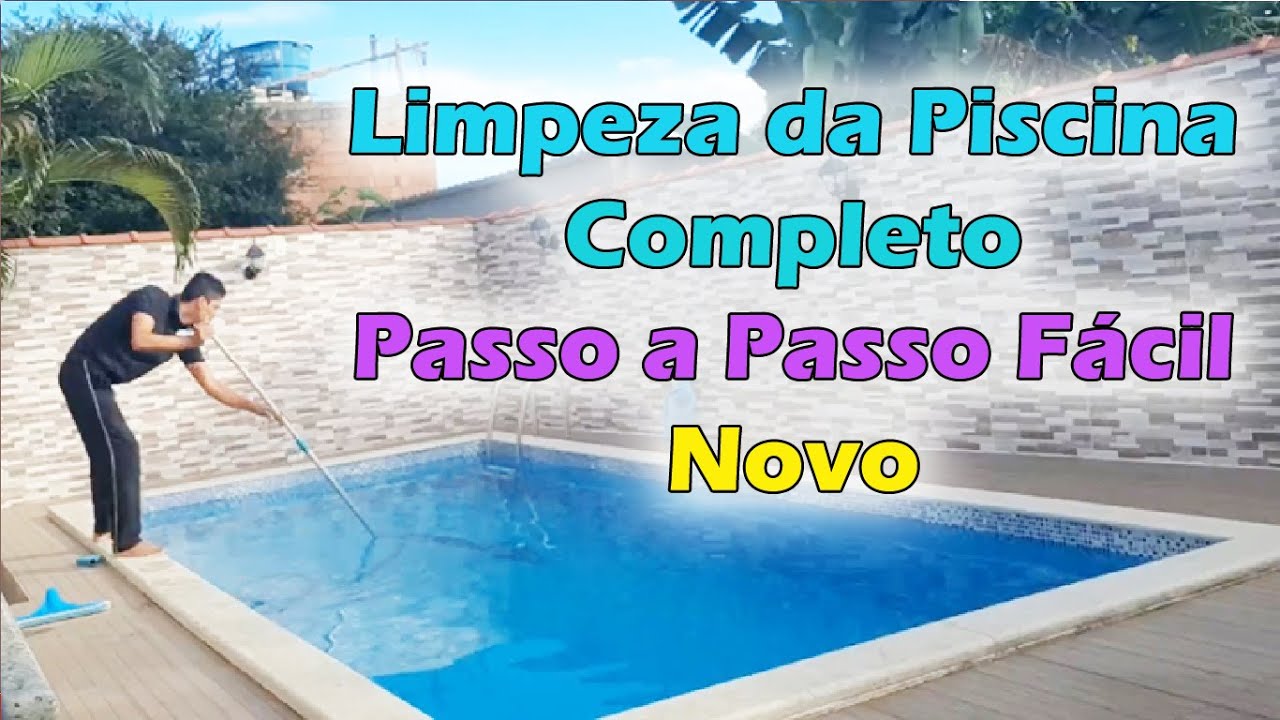Table of contents
A swimming pool is always associated with leisure and fun; however, it can be a synonym of headache when it is not well taken care of. The lack of water hygiene can turn the pool into a propitious environment for the proliferation of bacteria that can transmit diseases, such as mycosis.
On the other hand, treatments done incorrectly, with excessive application of products, cause water saturation and damage the pool lining material, "Besides, they can cause skin and eye irritation and change the color of hair strands", highlights iGUi Trata Bem maintenance technician Anderson Alves.
To avoid unpleasant experiences, the pool must receive constant maintenance. According to specialists, by following basic rules, anyone can take care of their pool correctly.
Check out the step-by-step:
The first step is to study how the cleaning should be done and not just follow your intuition: "The maintenance must be correct, since the pool water is exposed to all kinds of weather", alerts Alves. To solve the basic doubts of those who are interested in keeping a clean and healthy pool, here is a step-by-step guide:
Step 1 - Assess Alkalinity
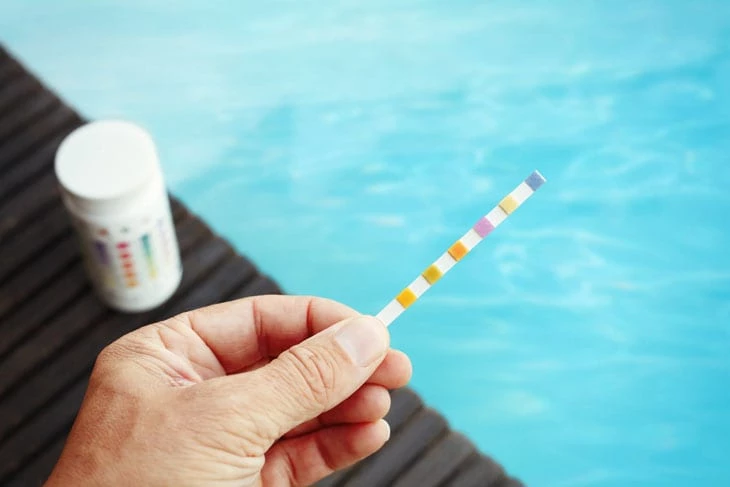
The ideal measurement should be between 80 and 120 ppm. if adjustments are needed, the alkalinity elevator or reducer must be applied," advises hth specialist Fábio Forlenza, also known as Professor Piscina.
Step 2 - Check the pH of the water
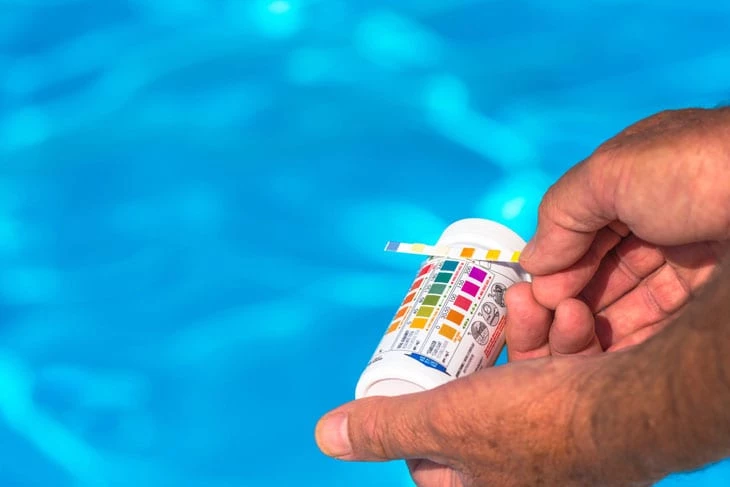
In a healthy pool, the pH should always be as close as possible to 7.0, which is a neutral pH, comfortable for the eyes and skin. The measurement is also done with a test tape to evaluate the chemical parameters, and if adjustments are needed, there are products capable of raising or lowering the pH.
Step 3 - Purify
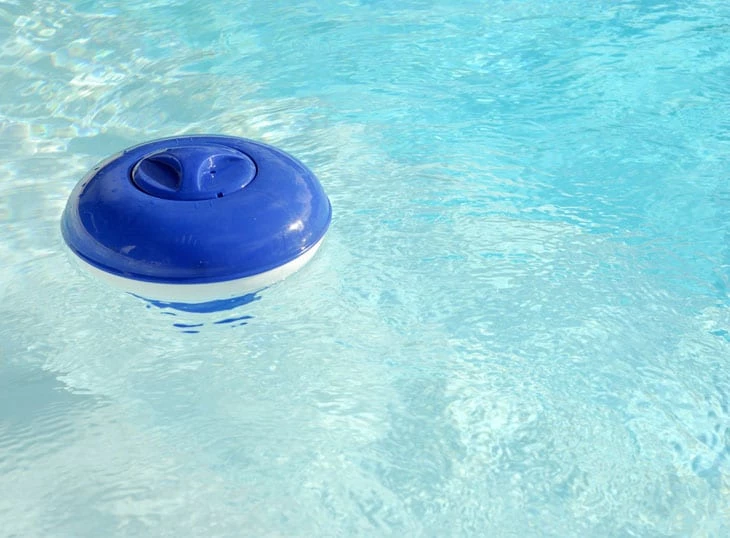
The application of granulated chlorine serves to keep the water clean, crystalline, and healthy: "The product will only have an effect if the water's alkalinity and pH are correct, which is why it is necessary to measure it before adding it. Otherwise, it will have no effect at all", points out Alves.
See_also: Optimize your space creatively with a wine cellar under the stairsAnother common mistake is the frequency of chlorine application: "It should be done two or three times a week, but many people apply chlorine only once a week," warns Forlenza.
Step 4 - Protect
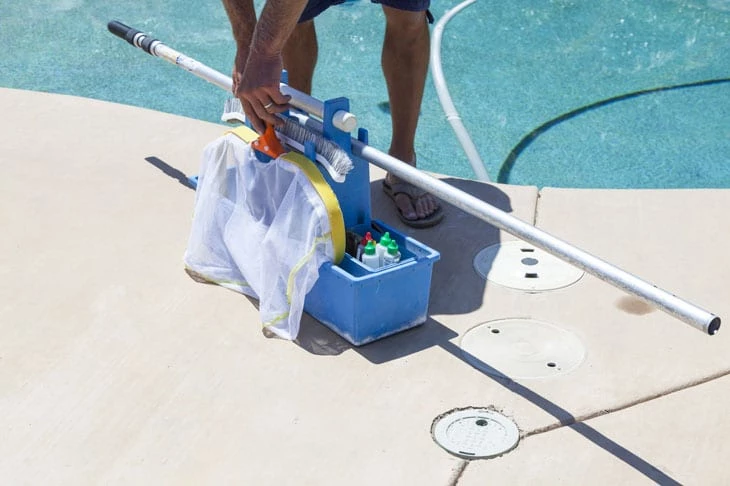
The application of complementary products to chlorine is also necessary, such as the maintenance algaecide, which prevents the water from becoming greenish. In the case of pools with a modified color, the use of a clarifying product is recommended. There are also specific items for border cleaning and oil elimination.
Then take note of the essential products to keep your pool clean:
- Test Tape for evaluation of chemical parameters
- Alkalinity and pH adjusters - chemicals that make this correction
- Granulated Chlorine
- Maintenance algaecide
See_also: Hawaiian Party: 80 ideas and tutorials to create a colorful decoration- Clarifier
- Sand Aide
- Edge cleaner
- Water Oily Eliminator
- Sieve to remove the leaves
- Aluminum telescopic handle
- Plastic vacuum cleaner
- Plastic suction hose
- Brush for scrubbing the pool walls and floor
- Soft sponge to clean the edge
After the water quality is guaranteed, the pool needs to be filtered daily. before performing the task, it is necessary to evaluate the volumetry of the engine. for example, an equipment capable of circulating ten thousand liters in 60 minutes, installed in a 20 thousand liter pool, needs to be activated two hours daily to filter all the water. all the steps indicated by the specialists must beThis is very harmful for children, people with skin sensitiveness and is highly irritating to the eyes", reinforces Alves. Make sure your pool is well maintained and cared for!

